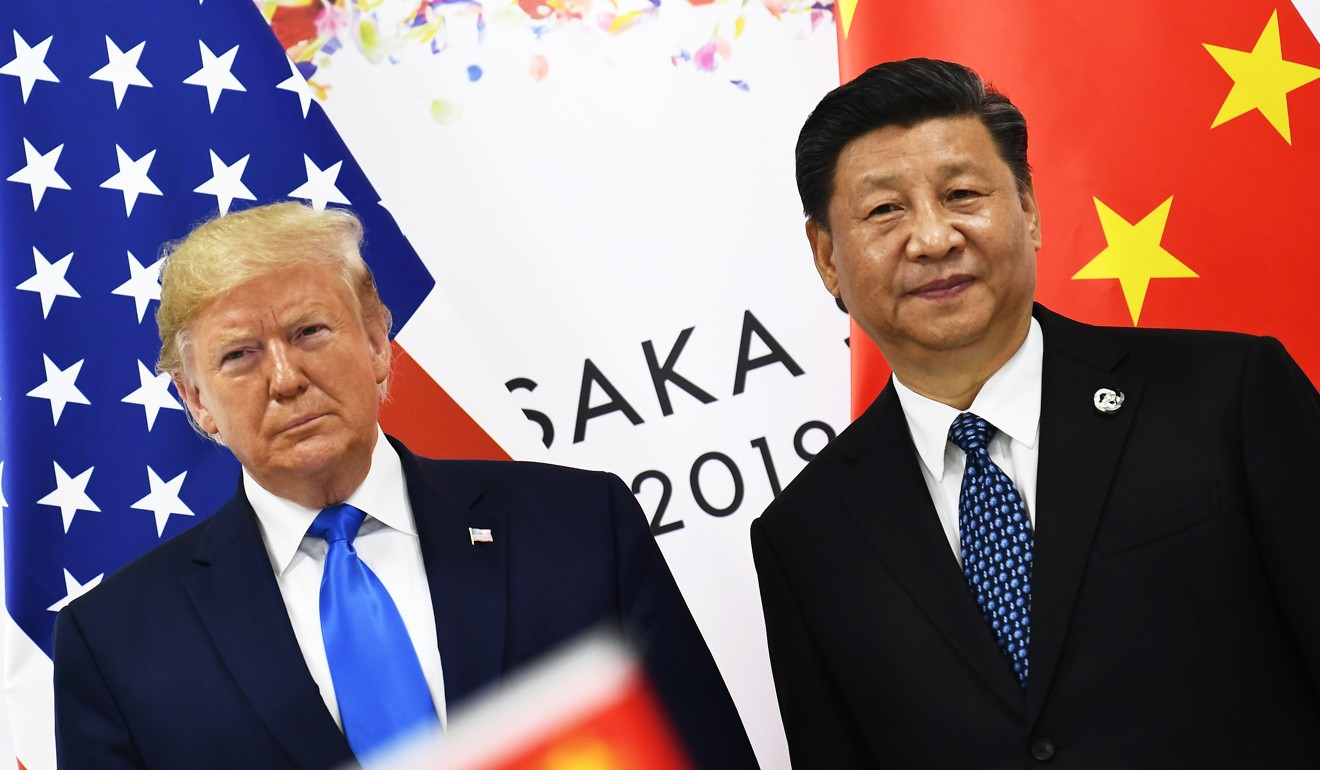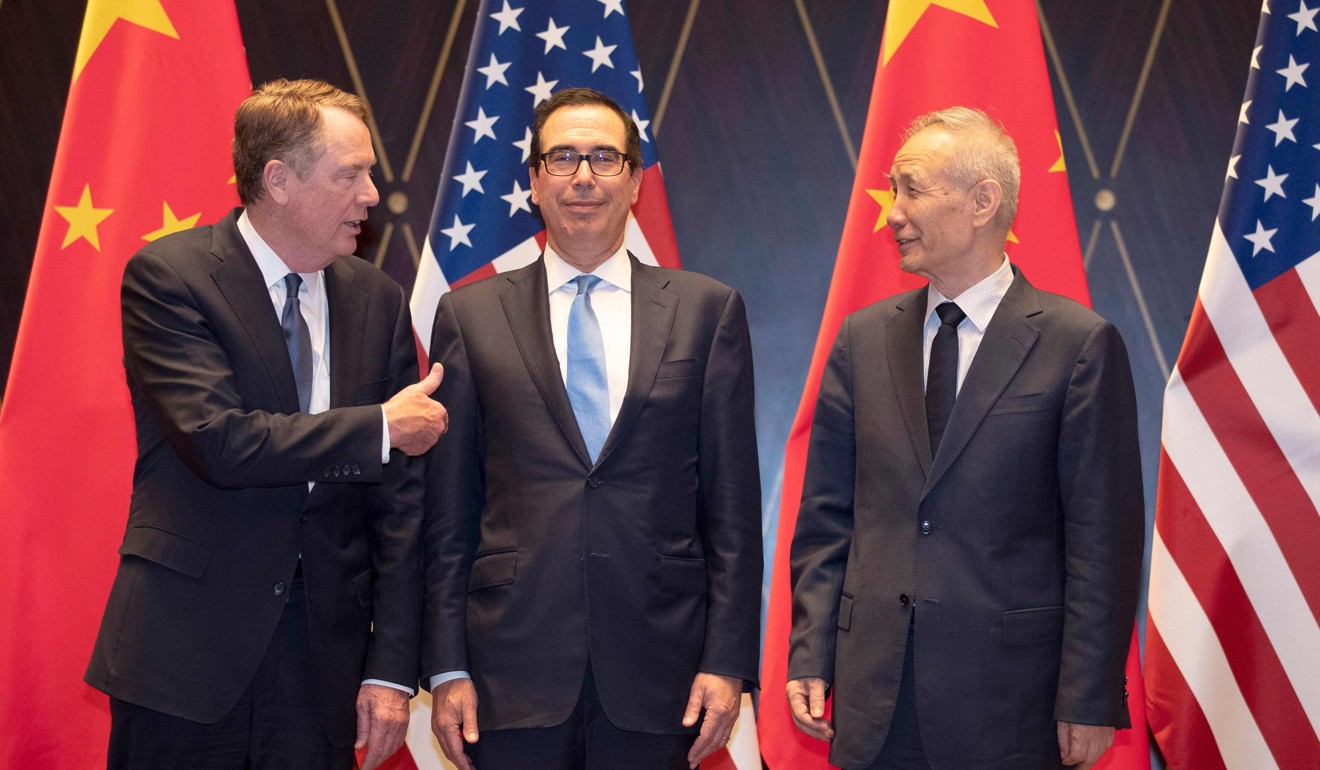Could US-China talks lead to a deal? Don’t count on it before 2020
- As senior officials prepare for another round of trade negotiations in October, there are signs that Beijing and Washington may dig in rather than compromise

This story is published in a content partnership with POLITICO. It was originally reported by Adam Behsudi on politico.com on September 6, 2019.
Even as senior trade officials prepare to meet in early October for yet another round of trade talks, escalating tariffs, heated rhetoric and stringent economic policies all indicate that the two powerful economies are digging in rather than approaching a detente.
“Although there are potential mutually acceptable compromises on each of the issues that led the talks to collapse in early May, the chance of a deal by the end of Trump administration’s first term, not just the end of this year, is infinitesimally small,” said Scott Kennedy, a China expert at the Centre for Strategic and International Studies.
By the time the two sides meet, China will have moved past the October 1 anniversary of the founding of the Communist Party, potentially leaving some room for compromise. Yet, by that date, both sides have pledged to significantly increase punitive tariffs on each other on billions of goods.
On Thursday, markets soared on the news of another meeting. But several steps China has taken recently are aimed at further insulating its economy from the shock of the trade fight.
Chinese President Xi Jinping released last week new strategies to bolster the country’s manufacturing capabilities. China’s State Council, the government’s top administrative authority, also unveiled last week a set of measures to boost domestic consumption.
The Chinese leader in a speech on Tuesday urged government officials to carry out a “resolute struggle” against long-term risk to the party’s rule. The State Council on Wednesday also announced “targeted measures” to ensure economic stability.
Steps that would inflict pain on China’s national champion companies might bring them around to a binding deal
For his part, US President Donald Trump has also adopted a tough posture. He has demanded on Twitter that US multinationals leave China.
And he contended that tariffs will continue to “crumble” supply chains that run through China and hurt the country’s economy even if Beijing prefers to wait out the administration through the 2020 election.
“Think what happens to China when I win. Deal would get MUCH TOUGHER!” Trump warned over Twitter this week.
....And then, think what happens to China when I win. Deal would get MUCH TOUGHER! In the meantime, China’s Supply Chain will crumble and businesses, jobs and money will be gone!
— Donald J. Trump (@realDonaldTrump) September 3, 2019
Tensions have also been heightened by the US crackdown on Chinese telecommunications giant Huawei and the prospect of Western democracies developing a response to a possible Chinese intervention in Hong Kong.
“Add to this the fact that both sides believe they are stronger than the other side, and that neither believes the other would live up to their commitments,” Kennedy said. “All of this creates a perfect hurricane-like storm for no deal and further escalation.”
One US source close to the talks say the recent measures pursued by China show the country is committed to pursuing an industrial policy that the Trump administration has sought to curb.
“Trump could cry uncle at any time,” said the source. “But if he’s going to take a deal at this point, it’s probably going to be pretty weak.”
So far, China has shown little willingness to fully address US concerns over forced technology transfers and theft of intellectual property. Talks broke down in May after China backtracked from language that would require it to enshrine a number of commitments on those “structural” issues.
China is imposing a more restrictive environment on foreign companies, even as the US pushes it to further open its market and strengthen protection of intellectual property.
Beijing has moved forward with a so-called corporate social credit system to monitor and control the activities of foreign companies in China, the European Chamber of Commerce in China said in a recent report.
“The lifting of hard market barriers can, in part, be explained by the government’s growing confidence in its ability to influence companies in a more nuanced and targeted way,” the report said.
Chinese officials have also consistently rebuffed Trump’s demands that the country significantly increase purchases of US agricultural goods as a goodwill gesture. If Beijing continues to balk at US demands, Trump could view a continued fight as an asset going into an election year.
“We’re at very low levels of pressure compared to what could be done,” said Michael Pillsbury, an outside adviser to Trump on China and senior fellow at the Hudson Institute.
Additional tariffs are an option, but Pillsbury said the administration could take more targeted measures – such as eliminating waivers that allow Chinese companies listed on US stock exchanges to bypass auditing and financial disclosure requirements required for American firms.
Threatening to delist major Chinese companies like Alibaba and Tencent could add further pressure on Beijing to agree to US demands to end policies accused of ripping off US technology. Alibaba is the owner of the South China Morning Post.

There are 159 Chinese firms listed on US stock exchanges representing a total market capitalisation of US$1.1 trillion, according to the US-China Economic and Security Review Commission.
The commission has raised alarm over the inability to properly monitor US-listed Chinese firms for fraud and abuse, most recently in its 2018 annual report.
“Steps that would inflict pain on China’s national champion companies might bring them around to a binding deal,” Pillsbury said.
Trump has also recently indicated that he is less concerned about the 2020 political fallout as a result of China’s retaliation against US farmers.
The administration has made billions of dollars worth of payments to producers of soybeans, corn, pork and other commodities as Chinese counter-tariffs have significantly cut off a major export market for US agriculture.
“I gave the farmers US$16 billion, which makes them totally whole on China. That’s what China spends in a good year,” Trump told reporters on Friday.

Over the summer, Trump‘s actions have grown more defiant. The US imposed a 15 per cent tariff on roughly US$112 billion worth of Chinese imports on September 1.
A 25 per cent tariff on US$250 billion worth of goods is set to increase on October 1. And even more tariffs are set to be imposed on December 15, when Trump said he would penalise almost all remaining imports from China.
Each of those tariff escalations was directly linked to Trump’s frustration when senior US officials returned from their last in-person meeting in Shanghai in July and reported that China was refusing to budge on core US demands.
Still, amid the rhetoric, the two governments say they are hoping for “meaningful progress” when the officials meet in Washington in early October.
A deal is achievable if China were to come to talks ready to accept commitments it rejected in May that would force Beijing to alter its laws, Pillsbury said.
“A lot of what is going on now is how to make a trade agreement legally binding,” he said.